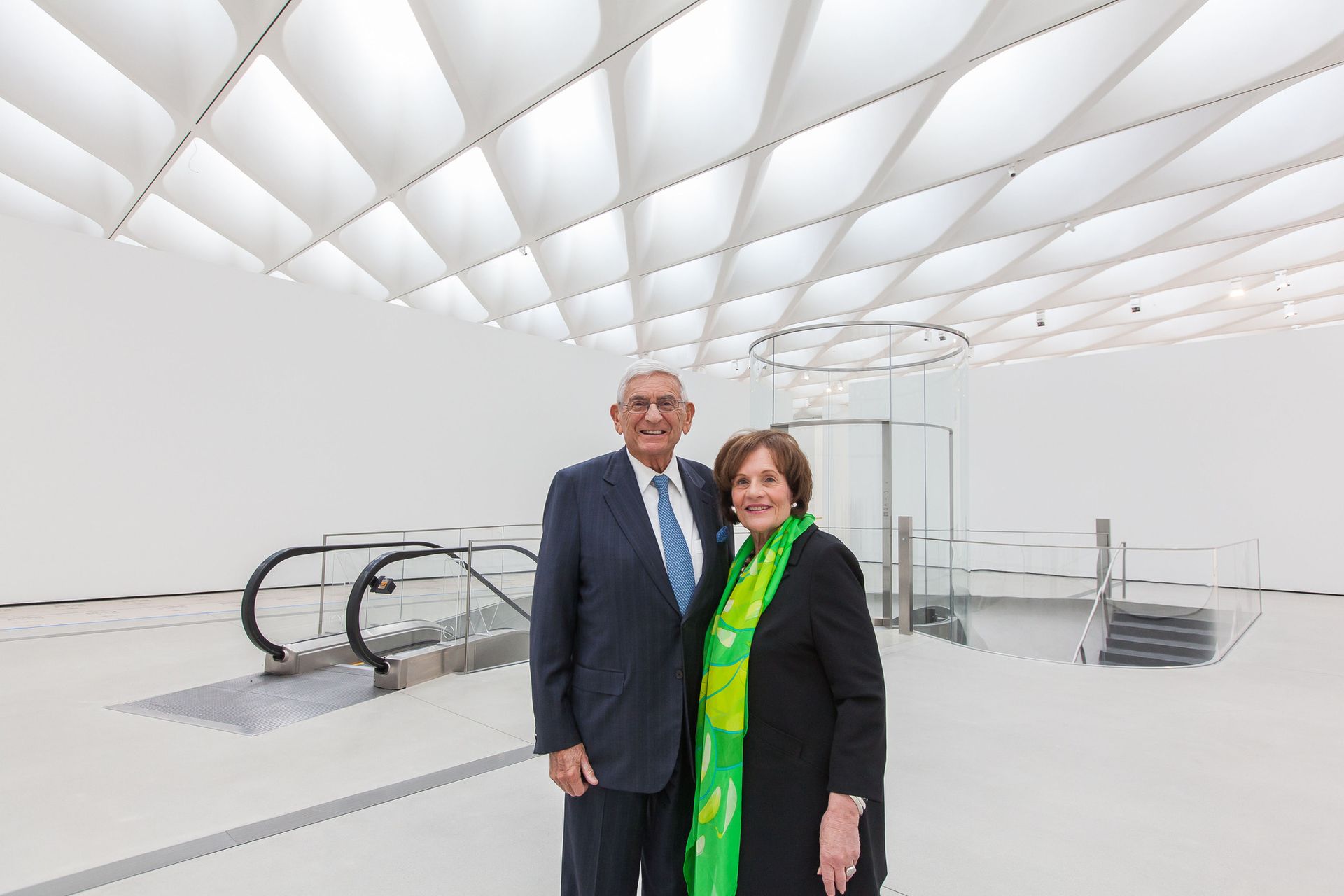The Broad in Los Angeles, the highly anticipated private museum that features the collection of the philanthropists Eli and Edythe Broad, may not officially open to the public until 20 September, but buzz is building. The museum has already reserved 85,000 timed tickets (admission is free). Around 250 people are expected to enter every 30 minutes on opening day.
In a presentation to press on Wednesday (16 September), the mayor of Los Angeles, Eric Garcetti, called the Broad a “crown atop downtown”. “Very few dispute that the best creators are here. We have an art scene that isn’t just marking history, it is making history, and today that is what you have done,” he said. The museum’s architect, Elizabeth Diller of the firm Diller Scofidio + Renfro, thanked the Broads for “understanding that the intricacy of this project required more effort than anyone imagined…and for footing the bill.”
The 120,000-sq.-ft museum (originally scheduled to open in 2012 but delayed in part due to construction challenges) offers the most in-depth presentation to date of the Broads’ 2,000-strong collection, all of which is stored in a central vault on site.

For the inaugural installation, the museum’s founding director Joanne Heyler made sure to include a bevy of crowd-pleasing hits. Nine works by Jeff Koons, including Tulips (1995) and Balloon Dog (1994), are installed throughout the light-filled top floor, alongside paintings by Roy Lichtenstein, Christopher Wool and Mark Bradford. A room-size sculpture of a table fit for a giant by Robert Therrien is sure to become a fixture on Instagram.
Visitors can sign up using an iPad in the lobby for the virtual queue to view Yayoi Kusama’s Infinity Mirrored Room, one of the Broad Foundation’s recent acquisitions. The mirror-filled installation hung with twinkling LED lights, which is meant to be experienced individually, drew eight-hour lines when it was shown at David Zwirner Gallery in New York in 2013. At the Broad, visitors will receive a text 10 minutes before their scheduled viewing time.
The inaugural display of more than 250 works by some 60 artists includes a few surprises, including paintings from the 1980s by David Wojnarowicz and Jack Goldstein, who are less associated with the Broad’s collection. A tapestry from 2013 featuring an image of Karl Marx’s grave by the Polish-English artist Goshka Macuga is the only work on show with a performance component. (Two women in body paint sit in front of the tapestry chatting in a pose reminiscent of Manet’s Le déjeuner sur l’herbe (1862-3).)
Early reviews of the museum have been mixed. In the New York Times, Holland Cotter described the institution—which is dominated by painting and sculpture—as “a museum of an old-fashioned kind”. Broad disagrees. “I don’t think there is anything old fashioned about this museum,” he said in a conversation with press on Wednesday. He noted that visitors will be “greeted by young people, not stodgy old museum guards.”
“We want to be different from the Frick and the Norton Simon,” Broad said, referring to the private collection museums in New York and Pasadena. “We want to be dynamic, more open.”
• For a more in-depth look at the Broad, see our October issue.

